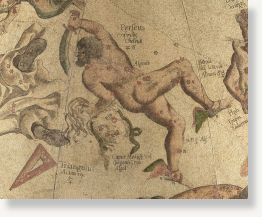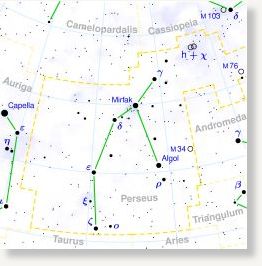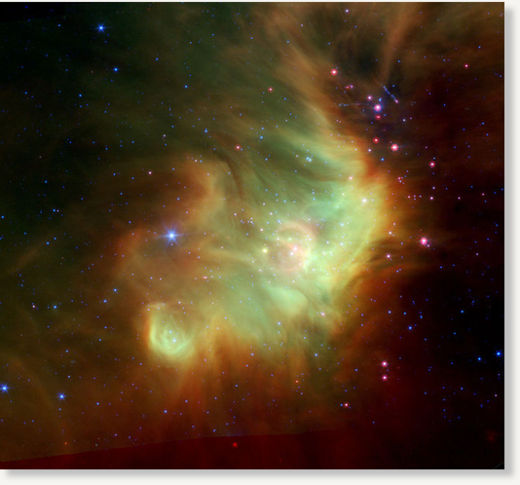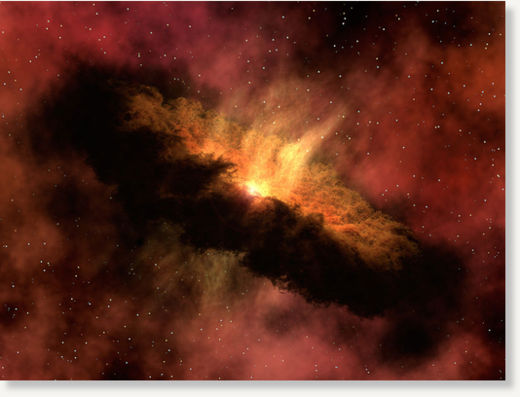Perseus constellation is one of the oldest known constellations in the night sky, dating back to ancient Greek times. It was first mapped by Ptolemy, a Greek astronomer, astrologer, mathematician and geographer, in the 2nd century A.D. Ptolemy authored the
Almagest, the only comprehensive ancient treatise on
astronomy, which contained astronomical models in tables that made it easy to calculate both past and future positions of the planets, as well as a catalogue of 1022 stars and their positions in
star constellations. Perseus was one of the 48 constellations included in Ptolemy's catalogue and is still one of the 88 modern constellations, recognized by the International Astronomical Union.
Constellation FactsPerseus lies in the northern hemisphere and occupies an area of 615 square degrees. The constellation can easily be seen from any northern latitude and is easily recognizable because it has a distinct "Y" shape.The best time to observe Perseus is during winter, around 9 p.m. in the month of December.
Perseus constellation can also be spotted from southern latitudes that are north of -35°. South of the equator, the constellation is particularly easy to observe during the summer months.
Perseus constellation was named after the Greek mythical hero Perseus. There is actually an entire family of constellations that was named after Perseus. These include the constellations Andromeda, Cassiopeia, Cepheus, Cetus, Pegasus, Auriga, Lacerta and Triangulum. Perseus lies next to the constellation Andromeda, which represents his wife in Greek mythology. Other constellations neighbouring Perseus are Cassiopeia, Triangulum, Aries, Taurus, Auriga and Camelopardalis.

© UnknownPerseus on the Mercator Celestial Globe
Perseus was the son of the god Zeus and Danaë, the princess of Argos. Danaë's father, the king Acrisius, had been told by an oracle that his grandson would be the one to cause his death. Acrisius subsequently locked Danaë away in a dungeon to prevent the prophecy from being fulfilled. However, Zeus would not be stopped. He turned himself into golden rain, which fell into Danaë's lap and got the princess pregnant.
The best known stories about Perseus are related to the Gorgon Medusa and the princess Andromeda. Medusa was one of the three hideous sisters whose gaze would turn those who looked at them into stone. Among the three Gorgons, Medusa was the only one that could be killed. It was Danaë's suitor, king Polydectes, who sent Perseus to get the Gorgon's head, hoping he would not return from the expedition. Danaë had been rejecting the king's advances and the king wanted Perseus out of the way. To pull this off, Polydectes invented a story about marrying another woman and sent Perseus to kill Medusa and bring her head back to him as a wedding present.

© UnknownConstellation Map
Perseus obliged and left to accomplish the task given to him. The Gorgon Medusa had snakes for hair, brass hands, tusks and golden wings. Perseus found her and waited for her to fall asleep. Once she did, he chopped her head off. On his way home, Perseus found Andromeda, the princess of Ethiopia (not the same country as present-day Ethiopia), chained to a rock. Her parents, Cassiopeia and Cepheus, had left her to the sea monster Cetus as punishment for her mother's boastfulness, which had invoked the rage of the sea nymphs. Perseus rescued Andromeda from the monster, decided to take her to Seriphos with him and later married her.
When Perseus returned with Medusa's head, Polydectes was taken aback, not having expected to see him again, and he was hostile to Perseus. In a fit of anger, Perseus took out Medusa's head and turned the king into stone.
Stars in PerseusThe brightest star in the constellation Perseus is alpha Persei, also known as Algenib or Mirfak. Lying about 590 light-years from Earth, Algenib is a yellow-white supergiant 5,000 times more luminous than the Sun. It is the 32nd brightest star in the sky. Algenib is also the main star in the Alpha Persei Cluster (aka Melotte 20 or Collinder 39), an open star cluster that also includes stars with designations delta, epsilon psi, 29, 30, 34 and 48 Persei.
Algol, beta Persei, is probably the best known star in Perseus. Often referred to as the Demon Star or the Blinking Demon, Algol derives its name from the Arabic phrase ra's al-ghul, which means ''head of the ogre.'' In 16th century, the star's Latin name was Caput Larvae, or Spectre's Head. The Chinese have an equally charming name for it: Tseih She, or ''Piled up corpses.'' In Hebrew folklore it is referred to as Rosh ha Satan, or the Satan's Head. Medieval astrologers considered Algol to be the most unfortunate star in the night sky. Algol was the first eclipsing binary star ever discovered. The two components are a B8 class main sequence star and a subgiant.
Zeta Persei, the third brightest star in the constellation, is another supergiant, with a mass 19 times that of the Sun, 980 light-years distant. Epsilon Persei (Adid Australis) is a multiple star system 540 light-years away, and gamma Persei (Al Fakhir) is another star system, 260 light-years distant, with two main components: a yellow giant and a white companion star.

© UnknownPerseus Nebula
Perseus contains a number of interesting deep sky objects. The best known ones are The Double Cluster, Messier 34, Little Dumbbell Nebula (Messier 76), California Nebula (NGC 1499) and NGC 1333.
The Double Cluster consists of two open star clusters, NGC 869 and NGC 884, that are approaching Earth at 22 km/s and 21 km/s respectively. Messier 34 is another open cluster, seven light-years in radius, that contains about 400 stars. Messier 76, which also goes by the names the Little Dumbbell Nebula, the Cork Nebula and the Barbell Nebula, was named after the original Dumbbell Nebula, which it resembles. (The Dumbbell Nebula is located in the constellation Vulpecula.) The California Nebula, an emission nebula approximately 1,000 light-years away, got its name because its shape is similar to that of the State of California on a map. NGC 1333, also about 1,000 light-years distant, is a reflection nebula that contains a star forming region divided into two clusters of young stars, one glowing red and the other green and yellow.
The most notable galaxy observable in Perseus is NGC 1260, the spiral galaxy that was the site of one of the brightest objects ever observed, the supernova SN 2006g.

© UnknownNGC 1333
The Perseids are one of the most popular meteor showers among star gazers. Since the shower peaks around August 10 every year, it is also known as the "tears of St. Lawrence" among Catholics, who mark the day as the date of St. Lawrence's martyrdom.
The Perseid meteor shower has been observed for about two millennia. It can be observed every summer, from mid-July on, and is best seen in northern latitudes in the hours before the dawn. When it peaks in mid-August, the Perseid shower reaches a rate of over 60 meteors per hour.
The Perseids' point of origin, or the parent body, is the comet Swift-Tuttle. Swift-Tuttle was first discovered in 1862 and then spotted again over a century later, in 1992. When the comet passes the Earth in the year 2126, astronomers say it will probably be a sight similar to the comet Hale-Bopp in 1997. Swift-Tuttle is the largest object in the solar system that repeatedly passes the Earth at close distances. The comet has a stable orbit and astronomers are pretty confident that it will not crash into our planet over the next two millennia.
Reader Comments
to our Newsletter